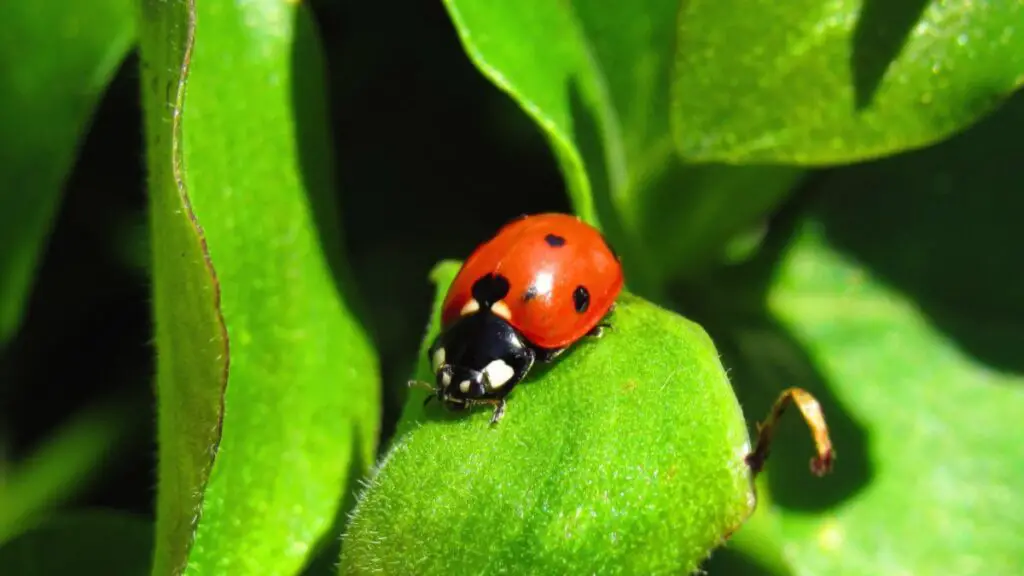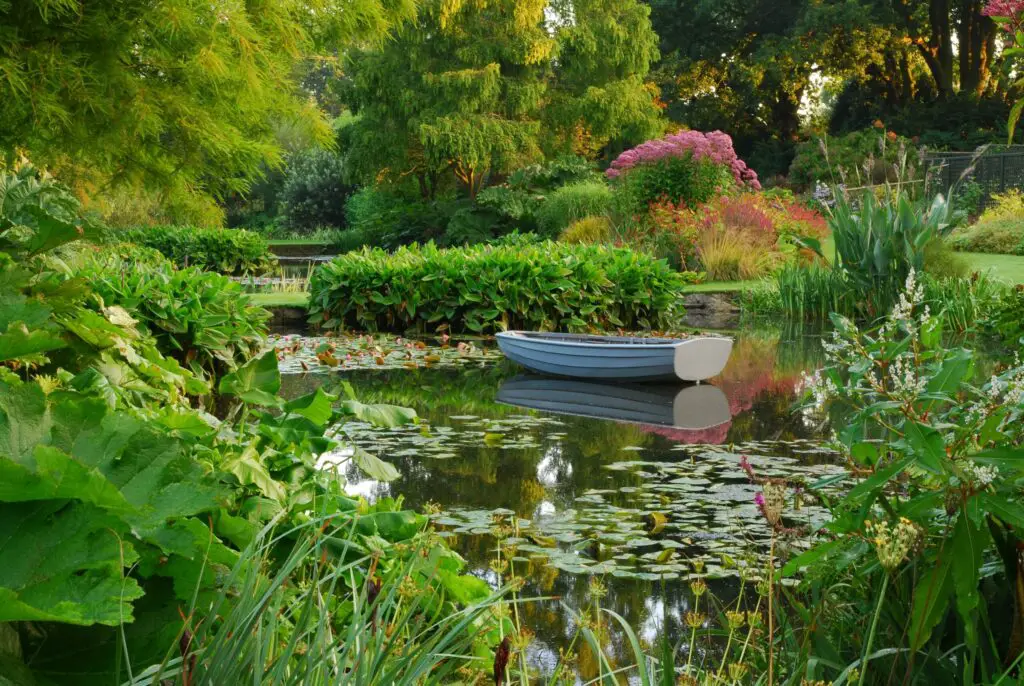Are Ladybugs Good For Gardens
Introduction
Are Ladybugs Good For Gardens: Ladybugs, also known as ladybirds or lady beetles, are small insects that are often associated with good luck. These colorful creatures are not only pleasing to the eye but also play a crucial role in maintaining the health and balance of gardens. With their voracious appetite for garden pests, ladybugs are considered beneficial insects that can help control harmful populations and reduce the need for chemical pesticides.
In addition to their pest control abilities, ladybugs also contribute to the overall health of connect gardens by aiding in pollination. While they are not as efficient as bees or butterflies, ladybugs do play a role in transferring pollen from one flower to another, helping to fertilize plants and promote their growth. This makes them valuable allies for gardeners who rely on a diverse range of pollinators to ensure successful harvests.
Ladybugs are indeed good for gardens. Their natural predatory instincts, combined with their reproductive capabilities and limited pollination contributions, make them an essential component of a healthy and thriving garden ecosystem. By attracting and supporting ladybug populations, gardeners can reduce the need for harmful pesticides and create a more sustainable and balanced environment for their plants.

What are the disadvantages of ladybugs?
But, there’s actually a bad kind of ladybug out there—ones that can bite and be aggressive, are harmful to dogs, invade your home, and leave behind a foul-smelling yellowish secretion that can stain walls and furniture.
Ladybugs, also known as ladybirds or lady beetles, are often considered beneficial insects due to their ability to control pest populations in gardens and agricultural fields. However, like any other living organism, ladybugs also have their disadvantages. In this article, we will explore some of the disadvantages of ladybugs.
One of the main disadvantages of ladybugs is their tendency to invade homes and buildings during the winter months. Ladybugs seek shelter in warm and cozy places to survive the cold weather. While they may seem harmless, their presence in large numbers can be quite annoying. Ladybugs can stain walls, curtains, and furniture with their yellowish secretion, which is released when they feel threatened. Additionally, their constant buzzing and flying around can be a nuisance.
Balancing Act: Ladybugs’ Potential Impact on Plants and Crops
Another disadvantage of ladybugs is their impact on certain plant species. While ladybugs are known to feed on aphids and other plant pests, they can also feed on the leaves and flowers of certain plants. This can result in damage to the plants, especially if the ladybug population is high. Gardeners and farmers need to be cautious when introducing ladybugs into their gardens or fields to ensure that they do not cause harm to their crops.
Ladybugs can be a threat to native insect species. Ladybugs are not native to all regions and have been introduced to some areas as a form of biological control. However, in these regions, they can outcompete and displace native insect species, leading to a decrease in biodiversity. This can have negative ecological consequences and disrupt the natural balance of ecosystems.
Lastly, ladybugs can also be a nuisance to humans in certain situations. Some people may be allergic to ladybug bites, which can cause skin irritation and allergic reactions. Additionally, ladybugs can infest stored food products, such as grains and cereals, contaminating them and rendering them unfit for consumption.
Are ladybugs lucky?
Historically and cross-culturally, ladybugs are believed to be talismans of luck. Some believe that, if a ladybug lands on you, you should count the number of spots to predict how many years of good luck you’ll have. Many think the spots indicate the number of months until your greatest wish comes true.
There is a common belief that ladybugs are lucky creatures. Ladybugs, also known as ladybirds or lady beetles, are small insects that are often associated with good fortune and positive energy. They are widely regarded as symbols of luck and are often considered to bring good luck and prosperity to those who encounter them.
One reason why ladybugs are considered lucky is their vibrant and attractive appearance. Ladybugs are known for their bright red or orange bodies with black spots, which are believed to bring joy and happiness. Their colorful appearance is often associated with positive energy and good luck, making them a popular symbol of fortune in many cultures.
The Luck of Ladybugs: Symbolism and Agricultural Prosperity
In addition to their appearance, ladybugs are also believed to bring luck because of their behavior. Ladybugs are known to be beneficial insects that feed on harmful pests such as aphids, mites, and scale insects. Their presence in gardens and crops is often seen as a sign of a healthy ecosystem and a bountiful harvest. This association with agricultural prosperity further enhances their reputation as lucky creatures.
Overall, the belief that ladybugs are lucky creatures is deeply rooted in cultural symbolism and their beneficial role in nature. Whether it is their vibrant appearance, their beneficial behavior, or their association with luck in various cultures, ladybugs have become widely regarded as symbols of good fortune and positive energy.
What are ladybugs enemies?
Birds are ladybugs’ main predators, but they also fall victim to frogs, wasps, spiders, and dragonflies. Ladybugs lay their eggs in clusters or rows on the underside of a leaf, usually where aphids have gathered. Larvae, which vary in shape and color based on species, emerge in a few days.
Ladybugs, also known as ladybirds or lady beetles, are small insects that are widely recognized for their bright colors and distinctive spots. These tiny creatures are not only beloved by gardeners for their beauty, but also for their voracious appetite for aphids and other garden pests. However, like all living organisms, ladybugs have their fair share of enemies in the natural world.
One of the most common enemies of ladybugs is the parasitic wasp. These wasps lay their eggs inside the bodies of ladybugs, which eventually hatch and consume the ladybug from the inside out. This gruesome process ultimately leads to the death of the ladybug. Another enemy of ladybugs is the lacewing larvae. These larvae are known for their ferocious appetite and will prey on ladybug eggs and larvae.
Ladybugs’ Predatory Perils: Threats from Spiders, Ants, and Larger Predators
Other insects, such as spiders and ants, also pose a threat to ladybugs. Spiders are skilled predators that can easily capture and consume ladybugs in their webs. Ants, on the other hand, are known to steal ladybug eggs and larvae for food. Ladybugs also face threats from larger animals, such as birds and frogs.
While ladybugs have their fair share of enemies, they have also developed a few defense mechanisms to protect themselves. Ladybugs are able to secrete a foul-smelling fluid from their leg joints when threatened, which deters some predators. They also have the ability to play dead, which can confuse and deter potential attackers.
Are ladybug larvae harmful?
Don’t let this fool you—the larvae of ladybugs don’t bite or sting. They are harmless to humans, yet highly valuable beneficial insects that feed on garden pests. Instead of trying to get rid of them, you should make them feel at home in your garden, as the more, the merrier.
Ladybug larvae, also known as ladybug nymphs, are the immature stages of ladybugs. These small, spiky creatures may appear intimidating to some, but they are actually quite beneficial in the garden. Ladybug larvae are voracious predators, feeding on a variety of garden pests such as aphids, mites, and scale insects. Their diet consists mainly of soft-bodied insects, making them an effective natural pest control method.
Ladybug larvae are not harmful to humans or pets. Unlike some other insects, ladybug larvae do not bite or sting. They are harmless and pose no threat to people or animals. In fact, having ladybug larvae in your garden can be a sign of a healthy ecosystem, as they indicate the presence of pests that the larvae are feeding on.
Ladybug Larvae Development: Complete Metamorphosis from Eggs to Adults
Ladybug larvae go through several stages of development before they become adult ladybugs. During this time, they undergo a complete metamorphosis, similar to butterflies. Ladybug larvae start off as tiny eggs, which hatch into larvae. The larvae then go through several molts, shedding their skin as they grow. Eventually, they pupate and transform into adult ladybugs.
It is important to note that ladybug larvae may look quite different from adult ladybugs. While adult ladybugs are known for their bright red or orange color with black spots, ladybug larvae are usually black or gray with spiky bodies. They may also have orange or yellow markings. These differences in appearance can sometimes lead to confusion, as people may mistake ladybug larvae for harmful insects.
Ladybug larvae are not harmful but rather beneficial creatures. They play an important role in controlling garden pests and are harmless to humans and pets. So, the next time you spot ladybug larvae in your garden, embrace them as natural allies in your battle against pests.
What color is a lucky ladybug?
A lucky ladybug is typically red or orange with black spots. The bright colors of a ladybug make it easily recognizable and often associated with good luck. The most common color pattern for a ladybug is red or orange with black spots, although there are some variations. Some ladybugs may have more spots than others, and the spots can be different shapes and sizes. The number of spots on a ladybug can vary depending on the species and individual variation.
While red or orange with black spots is the most common color pattern for ladybugs, there are also other color variations. Some ladybugs may be yellow or even black with red spots. These color variations are less common but still occur in certain species of ladybugs.
Bright Colors as Defense: Ladybugs’ Warning Signal to Predators
The bright colors of ladybugs serve as a warning to predators that they are toxic or bad-tasting. Ladybugs can secrete a foul-smelling liquid from their joints when threatened, which deters predators from eating them. The bright colors act as a visual warning to predators, signaling that the ladybug is not a good meal.
In some cultures, ladybugs are considered a symbol of good luck and are believed to bring good fortune. This belief may stem from the ladybug’s beneficial role in eating pests that can harm crops and gardens. Ladybugs are often seen as a sign of good luck and are sometimes even kept as pets or released into gardens to help control pests.
Ladybugs play a crucial role in gardens as natural pest controllers. They are voracious predators that feed on a variety of garden pests, including aphids, mites, and scale insects. Ladybugs are particularly effective in controlling aphid populations, which can quickly multiply and damage plants. By consuming these pests, ladybugs help to maintain a healthy balance in the garden ecosystem.
Ladybugs also contribute to pollination. While they are primarily known for their pest control abilities, ladybugs also feed on nectar and pollen. As they move from flower to flower in search of food, they inadvertently transfer pollen, aiding in the fertilization process. This makes ladybugs valuable allies for gardeners, as they not only protect plants from pests but also assist in their reproduction.
Ladybugs are beneficial insects in gardens due to their role as natural pest controllers and pollinators. Their voracious appetite for garden pests helps to keep populations in check, preventing damage to plants. Additionally, their unintentional pollination activities contribute to the overall health and reproduction of garden plants.
How do ladybugs benefit garden plants?
Ladybugs, also known as ladybirds or lady beetles, play a crucial role in maintaining the health and balance of garden ecosystems. These small, colorful insects are voracious predators of garden pests, particularly aphids. Ladybugs feed on aphids by piercing their bodies and sucking out their juices, effectively controlling their population. This natural form of pest control helps to prevent aphids from damaging garden plants and crops.
Ladybugs also feed on other harmful insects such as mealybugs, mites, and scale insects. By consuming these pests, ladybugs help to keep their populations in check, reducing the need for chemical pesticides. Ladybugs are highly efficient predators, capable of consuming hundreds of aphids and other pests in a single day.
Pest control abilities, ladybugs also contribute to the pollination of garden plants. While they are not as effective as bees or butterflies, ladybugs do play a small role in transferring pollen from one flower to another. This can help to increase fruit and seed production in certain plants. Overall, ladybugs are beneficial insects that provide natural pest control and contribute to the overall health and productivity of garden plants.
Do ladybugs help control pests in gardens?
Why are ladybugs used as pest control? Ladybugs eat a few different species of insects, but are especially good at controlling aphid populations. They have a voracious appetite from the moment they hatch, eating scale bugs, mites, aphids, some small caterpillars, beetles, and even the eggs and larvae of other insects.
Yes, ladybugs are extremely beneficial in controlling pests in gardens. Ladybugs are natural predators of many common garden pests, such as aphids, mites, and scale insects. They feed on these pests by using their strong jaws to pierce their bodies and suck out their fluids. Ladybugs are particularly effective in controlling aphid populations, which can quickly multiply and damage plants.
Ladybugs are highly efficient predators. A single ladybug can consume hundreds of aphids in a day, making them an invaluable asset in pest control. Therefore, it is important to create an environment that encourages ladybugs to thrive in gardens. Planting a variety of flowers, especially those with small, clustered blooms like daisies and marigolds, can attract ladybugs. Additionally, avoiding the use of chemical pesticides and providing shelter, such as leaf litter or small rocks, can help create a welcoming habitat for ladybugs. By promoting the presence of ladybugs in gardens, gardeners can benefit from their natural pest control abilities and reduce the need for harmful chemical interventions.
Are ladybugs harmful to garden plants?
No, ladybugs are not harmful to garden plants. In fact, they are incredibly beneficial for gardens. Ladybugs are natural predators of many common garden pests, such as aphids, mites, and scale insects. These pests can cause significant damage to plants by feeding on their leaves, stems, and fruits. Ladybugs, on the other hand, feed on these pests and help keep their populations in check.
Ladybugs are particularly effective in controlling aphids, which are notorious for infesting garden plants. Aphids can reproduce rapidly and suck the sap from plants, causing them to wilt and become stunted. Ladybugs consume large numbers of aphids, preventing them from causing extensive damage to garden plants. Additionally, ladybugs also feed on other harmful insects like mealybugs, whiteflies, and spider mites.
By introducing ladybugs into your garden or creating an environment that attracts them, you can harness their natural pest control abilities. Providing a water source, such as a shallow dish with fresh water, can also help attract ladybugs. Avoid using pesticides in your garden, as these can harm ladybugs and other beneficial insects. Instead, embrace ladybugs as allies in your garden and let them thrive to keep your plants healthy and pest-free.
How can ladybugs be encouraged to thrive in gardens?
Ladybugs are beneficial insects that play a crucial role in maintaining a healthy garden ecosystem. They are natural predators of many common garden pests, such as aphids, mites, and scale insects. By feeding on these pests, ladybugs help control their populations and prevent them from damaging garden plants.
To encourage ladybugs to thrive in your garden, it is important to create a favorable environment for them. One way to do this is by planting a variety of flowering plants that attract ladybugs, such as daisies, marigolds, and yarrow. These flowers provide a source of nectar for adult ladybugs and also attract other insects that ladybugs feed on.
Another way to encourage ladybugs is by avoiding the use of pesticides in your garden. Pesticides can be harmful to ladybugs and other beneficial insects, so it is best to opt for natural pest control methods, such as handpicking pests or using organic insecticides. Additionally, providing ladybugs with shelter is important. You can do this by leaving some leaf litter or small piles of twigs in your garden, which serve as hiding places for ladybugs.

Conclusion
Ladybugs are indeed good for gardens. These small, colorful insects are natural predators of many common garden pests, such as aphids, mites, and scale insects. Ladybugs feed on these pests, helping to keep their populations in check and preventing them from causing damage to plants.
Not only do ladybugs help control pest populations, but they also play a crucial role in pollination. This makes them valuable allies for gardeners, as increased pollination leads to better fruit and vegetable yields.
Ladybugs are a natural and environmentally friendly alternative to chemical pesticides. By introducing gardening ladybugs into the garden, gardeners can reduce or eliminate the need for harmful chemicals that can have negative effects on the environment, as well as on beneficial insects and other wildlife. Ladybugs are a sustainable and non-toxic solution for pest control, making them a preferred choice for many gardeners.
Ladybugs are highly beneficial for gardens. Their role as natural predators of garden pests, their contribution to pollination, and their eco-friendly nature make them an invaluable asset for maintaining a healthy and thriving garden. By attracting and encouraging ladybugs to inhabit the garden, gardeners can enjoy the benefits of reduced pest damage, increased pollination, and a more sustainable approach to gardening. Ladybugs truly are a gardener’s best friend.








